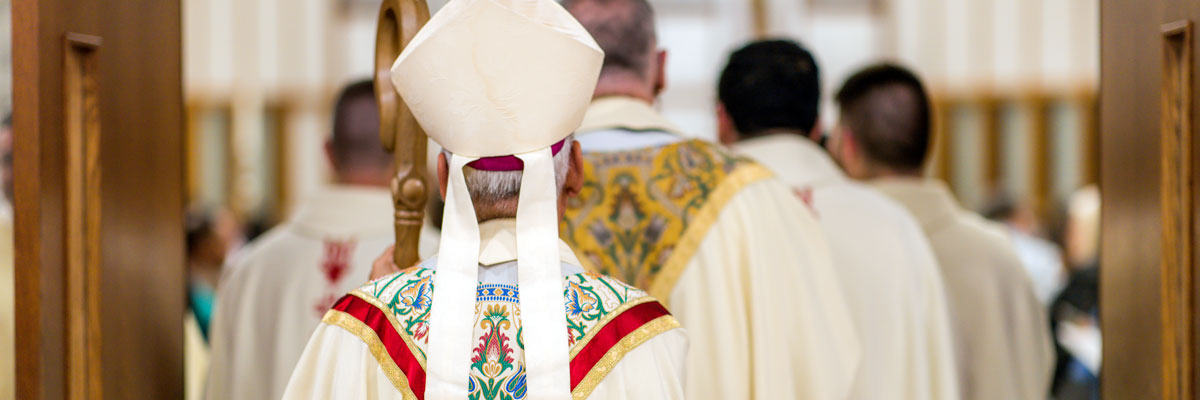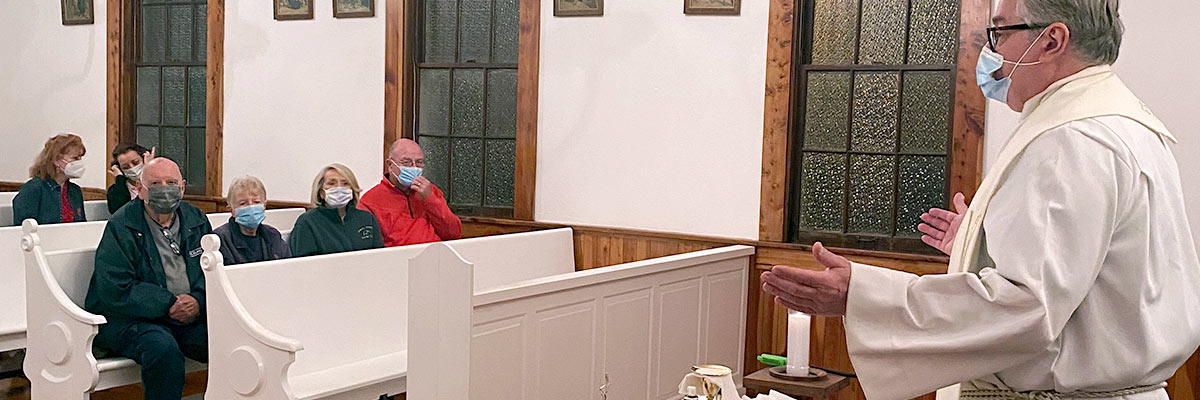Official Website of the
Catholic Diocese of Little Rock
Ash Wednesday 2022
Published: March 2, 2022
Bishop Anthony B. Taylor preached the following homily at St. John Catholic Center and the Cathedral of St. Andrew, both in Little Rock, on Wednesday, March 2, 2022.

Bishop Taylor
Today is Ash Wednesday, the beginning of another Lent. In a few minutes I’ll put ashes on your forehead, saying: "Remember you are dust and to dust you shall return."
I say dust to remind you of your mortality. In the book of Genesis, God molded Adam from the clay of the earth, formed the dust into a human being — indeed our word "human" comes from "humus," meaning fertile soil.
When we die our bodies, which are composed of the elements of the earth, decompose back into these same original elements. Dust to dust. So, what does that have to do with ashes? Why isn’t this Dust Wednesday?
Ashes are what’s left behind when smoke ascends to heaven; where we all hope to ascend one of these days. Ashes are the residue left behind by the purifying fire, the trials and tribulations of this earthly life. Ashes do eventually become soil and indeed fertilize the soil. That’s why some farmers burn their fields and plow under the remaining stubble and ashes. But unlike ordinary dirt, ashes also tell a story of previous life.
Wouldn’t it make more sense for me to put dust on your heads when I say: "Remember you are dust and to dust you shall return?" Why ashes?
One answer is that though we were formed from the dust of the earth, we’re more than the sum total of the earthly elements from which we were made. We were made in the image and likeness of God, given an immortal soul and the promise of eternal life for all who are found faithful.
Ashes are what’s left behind when smoke ascends to heaven — where we all hope to ascend one of these days. Ashes are the residue left behind by the purifying fire, the trials and tribulations of this earthly life. Ashes do eventually become soil and indeed fertilize the soil — that’s why some farmers burn their fields and plow under the remaining stubble and ashes — but unlike ordinary dirt, ashes also tell a story of previous life.
All ashes were once living organisms: plants or animals, including — and this is important for understanding today’s liturgy — including the palms with which people greeted Jesus when he entered Jerusalem on what we now celebrate as Palm Sunday.
And indeed, that’s where the ashes I put on your foreheads come from. We burned last year’s palms. Their smoke rose to the same heaven where we hope one day to join Jesus in God’s presence.
But the ashes of these palms remained behind. So I mark your forehead with this residue to remind you of your weakness and mortality, to remind you of how much you need your Savior, to remind you how impossible it is to earn heaven solely on the strength of your good works and virtuous life; to call you to repentance; to 40 days of prayer, fasting and generosity to the poor; 40 days in the desert with Jesus, 40 days to prepare you to then go forth sharing in Jesus’ Easter victory, to go forth to continue Jesus’ work here and now because you are now the body of Christ living and acting in today’s world.
"Remember that you are dust and to dust you shall return!" One day your earthly body will die and return to the earth. But you yourself, if judged faithful, will then be purified in purgatory. And then, having been purified as if by fire, so to speak, you will ascend to the throne of God.
Lent is a time of purification while still on earth. Its purpose is to deepen our conversion, free us from the power — fires — of hell, reduce our need for further purification in purgatory after death, and to ready us to share fully in the fruits of Jesus’ Easter victory.
"Remember that you are dust and to dust you shall return," but also remember that you have been saved by Jesus and to heaven you shall ascend!









